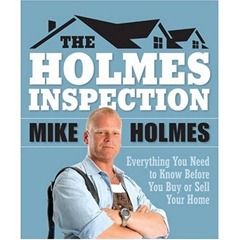So far in our “new†house (built in 1990) here in Canada we have had to replace our dish washer, washing machine, dryer, and a few weeks ago our stove died. We have also needed to replace one window, and about a half dozen others have broken seals and should be replaced soon.
We had a home inspection done, but none of these things were picked up on. I was told that I needed to replace a strip of timber on one window, but in fact the entire window needed replacing because the wood rot in the frame was so bad. Other than the “small work†that they said needed doing on the window none of the other items were picked up on. We talked to our real estate agent and were told it was just “Murphy’s Law†and couldn’t follow up on anything with the inspector or with the previous owners, which sucked.
I’ve been watching Mike Holmes on HGTV since our first visit to Canada. Recently he’s started to look into shonky home inspections and even wrote a book about Home Inspections called “The Holmes Inspectionâ€.
In The Holmes Inspection Mike Holmes looks at:
- What a home inspector can and can’t do
- The mechanicals of a house (plumbing, electrical, heating / cooling)
- The “envelope†(floors, walls, doors and windows)
- Location and sitting of the house
- Foundations
- How to see past the spit and polish people put on their houses prior to selling
- more …
I wish that I had purchased and read this book before getting this house. It certainly would have opened my eyes and helped me to see how much work was actually needed to get this house up to scratch.
After spending the last 5-years of our life in Australia renovating we were hoping to get here and take it easy for a while. No such luck so far …
